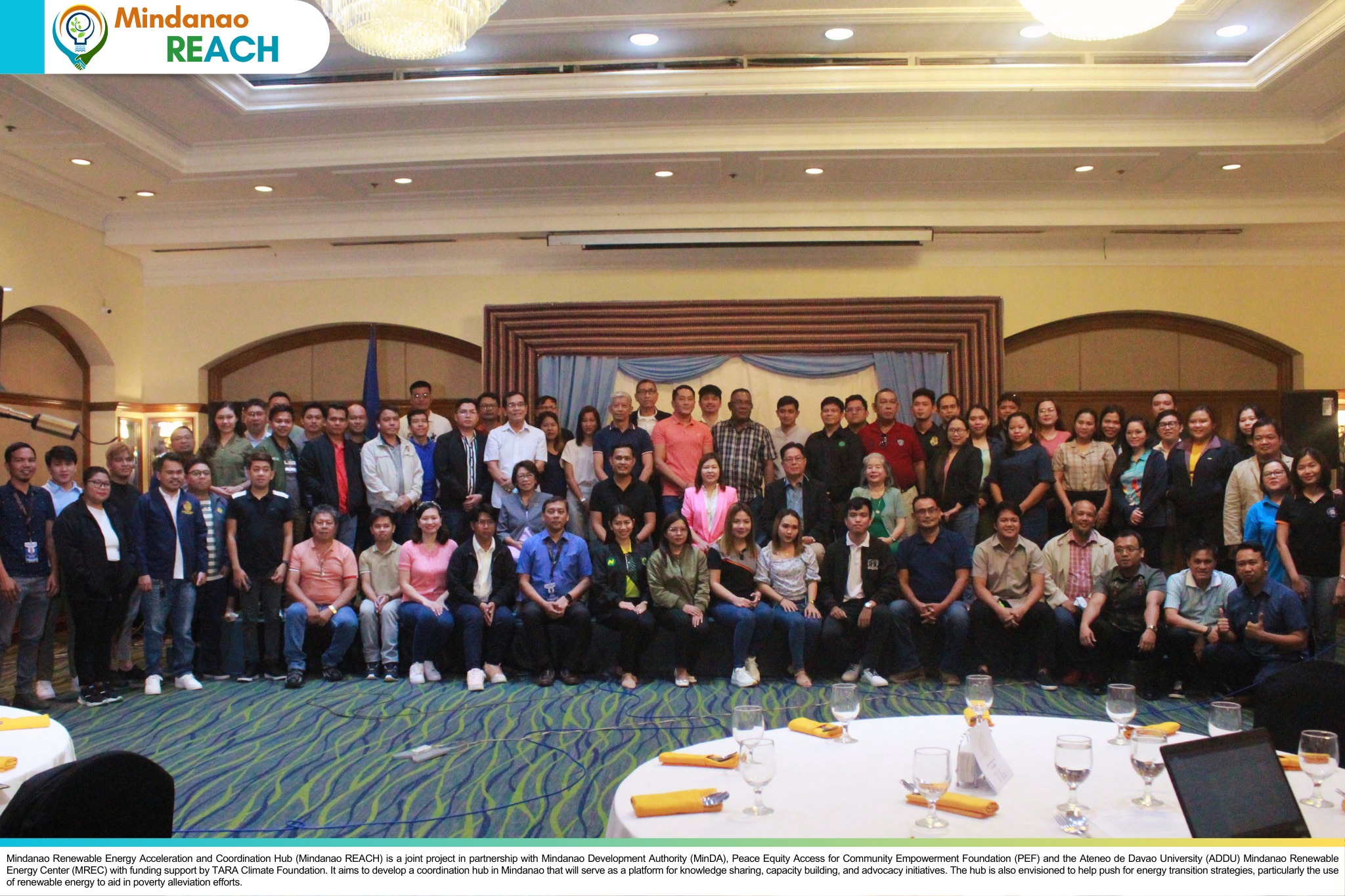THE NATIONAL Total Electrification Roadmap from the Department of Energy revealed that 91.15%[1] of households in the Philippines – representing over 25 million households – have access to electricity. However, 1.9 million families still live without power, with nearly one million of them in Mindanao. In the Bangsamoro region, only 40% of households have access to reliable electricity.
With Mindanao’s significant potential for growth, improving energy access in the region is vital for its development. However, the increasing costs of fossil fuels for rural electrification have driven public and private efforts to promote a transition to clean energy.
It is in this context that the Mindanao Renewable Energy Acceleration and Coordination Hub, or Mindanao REACH, was established.
REaching the unserved and underserved
In 2020, the Peace and Equity Foundation (PEF), the Ramon Magsaysay Transformative Leadership Institute, and the India-based non-profit, SELCO Foundation signed a memorandum of understanding to launch Mindanao REACH. The initiative aims to promote the use of renewable energy in the region as a tool for poverty alleviation.
This effort further gained momentum in 2022, with a memorandum of agreement between PEF, Ateneo de Davao University (ADDU), and the Mindanao Development Authority (MINDA). Their goal is to position Mindanao REACH as a platform for multi-stakeholder, grassroots-based strategies to bring renewable energy to poor communities that are either underserved or completely unserved by traditional grid-based electricity.
Since its inception, the Mindanao REACH has spearheaded capacity-building initiatives with electric cooperatives and local government units. These efforts focus on developing project proposals and local energy planning and management.
Driving economic growth through renewable energy
Mindanao REACH has also played a key role in the implementation of the Productive Uses of Renewable Energy (PURE) programs in the region. For example, in Region XII, PEF – the hub’s convenor – has provided solar-powered technology and equipment to coffee-producing communities, helping farmers in post-processing activities. This has boosted both economic activity and the incomes of local farmers.
Currently, 15 PURE projects are active in five municipalities in Region XII. Enterprises in these areas have benefited from solar-powered equipment like coffee dehullers, corn shells, and rice mills.
Looking ahead, similar initiatives are planned for Bukidnon in Region X. Mindanao REACH has actively participated in the crafting of the Bukidnon Coffee Roadmap, which integrates renewable energy as a potential power source for coffee processing in off-grid and underserved communities. Energy audits have already been completed with two agricultural enterprises in the province, laying the groundwork for further development.
PEF executive director Roberto Calingo sees the Mindanao REACH not only as an energy project but a contributor to the overall development of Mindanao, both in energy access and economic development.
“We look forward to a future with more renewable energy initiatives. There are hurdles, but with committed stakeholders, we can overcome them. Right now, we are concentrating on the communities, and we will keep working on the existing initiatives to uplift them towards a better quality of life,” said Calingo.
###
[1] 2023-2032 National Total Electrification Roadmap, Department of Energy.

